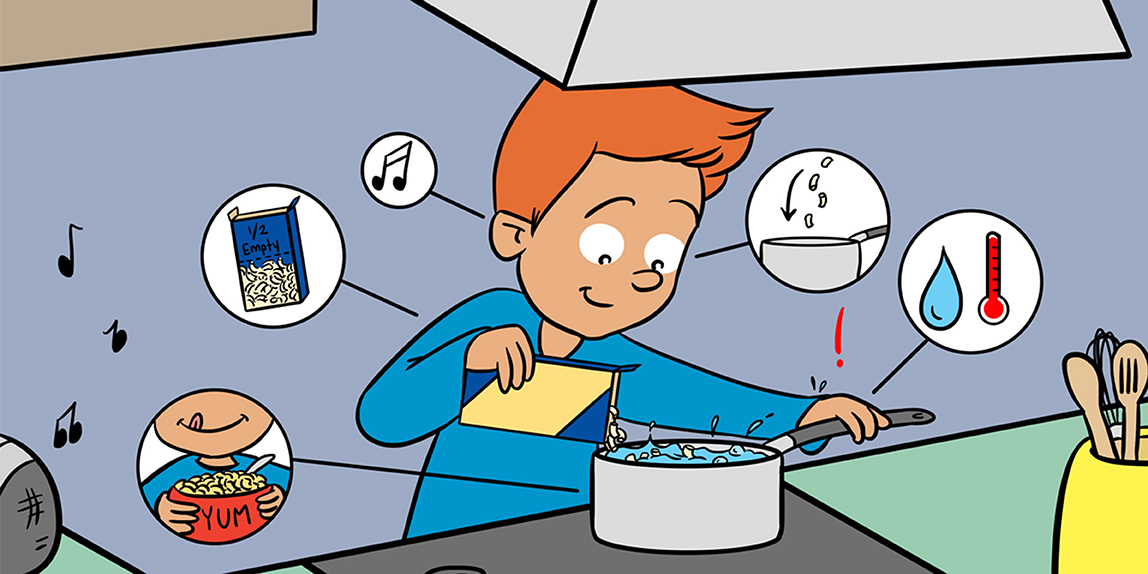Have you ever wondered what life would be like if you suddenly lost your sight? Many people’s first reaction might be: “Oh no, I wouldn’t be able to do anything!” But science tells us that things aren’t that simple.
Today, we’re going to talk about a very interesting experiment called sensory substitution. It shows us that even without sight, people can “see” the world in other ways. Sounds magical, doesn’t it?
This isn’t a scene from a science fiction movie, but real psychological and neurological research. Next, I’ll take you through the principles behind this experiment, some real-life examples, and what it can teach us all.
What is sensory substitution?
The core idea behind the sensory substitution experiment is this:

When one sensory function is lost, the brain can compensate for this loss through other senses.
Here’s a simple example: if you can’t see, you might be able to “see” your surroundings by ‘hearing’ or “touching.”
This research was first proposed by a psychologist named Paul Bach-Ritter in the 1960s. He made a bold attempt: to let blind people “see” things through touch.
He designed a device called a “tactile visual substitution system.” This device converts images captured by a camera into vibration signals, which are then transmitted to the blind person’s back. At first, the blind people had no idea what these vibrations meant.But after a period of training, they were able to distinguish the shapes and sizes of objects and even tell when objects were moving based on the sensations on their backs!
It sounds like magic, but it’s true. This experiment illustrates an important fact:
Our brains are much smarter than we think.
True story: Cole “saw” his mother with his ears
To help you better understand the significance of this experiment, let me tell you a true story.
Cole has been blind since birth and has never seen the world. But he has always been optimistic and willing to try new things.
Once, he participated in a research project where researchers put a special pair of headphones on him. These headphones were not for listening to music, but for converting images captured by a camera into sound signals and transmitting them to his ears.
At first, Cole heard only strange sounds and had no idea what they meant. But the researchers told him, “Don’t rush, take your time.”
So Cole practiced every day. After a few months, a miracle happened. He began to ‘hear’ the shapes and locations of objects. Even more touching was that one day, he “saw” his mother for the first time.
Although it was only through sound, Cole was so moved that he shed tears. He said, “So this is what my mother looks like. She is really beautiful.”
This story shows us that sensory substitution is not just scientific research; it can also change a person’s life.
Do we really ‘see’?
At this point, you may ask, “What does this have to do with me? I’m not blind.”
Actually, this is a question worth pondering for everyone.
We rely on our eyes to see the world and consider vision the most reliable sense. However, sensory substitution experiments tell us: What we call “seeing” is actually the brain’s interpretation of sensory information.
For example, when you close your eyes, can you imagine what the room looks like? You know where the table is, where the chair is, and where the door is. This is because your brain has stored visual information and can reconstruct the scene based on memory.
In other words, we don’t directly see the world with our eyes; we use our brains to “construct” the world.
So, the question arises: do we really “see”? Or are we just “perceiving” the images created by our brains?
Sensory substitution experiments make us realize that our senses can help each other. Even if we lose one sense, as long as we are willing to learn, our other senses can help us rediscover the world.
How powerful is the future of sensory substitution technology?
Sensory substitution not only helps blind and deaf people, but also brings unlimited possibilities for future technological development.
Currently, scientists are researching new technologies such as:
The development of these technologies is inseparable from the research foundation of sensory substitution.
More importantly, these technologies are not only for helping people with disabilities, but they also have the potential to completely change the way ordinary people interact with the world.
Imagine a future where we don’t need to stare at a screen to “see” information, or where we can recognize changes in our surroundings through sound alone. What a different world that would be!
Summary: Sensory substitution is changing our understanding of “perception”
Through this article, we can summarize several key points:
If you’re intrigued by this topic, why not learn more about the related scientific research? You might discover that the world we live in is far more complex and interesting than we ever imagined.

